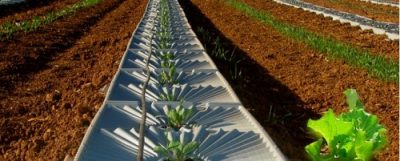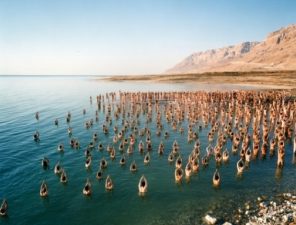AORA Solar CEO Zev Rosenzweig says he is more ready than ever to take on the world. His company’s hybrid solar thermal technology, which was launched in prototype test form in both Kibbutz Samar, Israel and Spain, has been revised and reconfigured based on a series of tests and is now ready for the global market. In an interview with Green Prophet, Rosenzweig said the company fully retrofitted about a dozen features of its 100 kW thermal solar tower system, including aspects of both the heliostats that collect thermal energy from the sun and the tulip-shared tower at the center that collects the heat and contains the system’s generator.
The new heliostats are smaller and cheaper than the previous ones, allowing for more direct reflection from the sun to the tower, and are made in Israel. Smaller mirrors, Rosenzweig said, allow for rounder reflection patterns, which means more of the energy can be collected by the tower, as opposed to larger mirrors that create a more oval-shaped reflection.
Unlike other solar thermal plants, that store the sun’s energy for use at night with molten salts or other heat-storing mediums, AORA’s tower churns a generator when the air inside its tulip-shaped tower reaches 1000 degrees Celsius. If a cloudy or rainy day lowers the temperature inside the tower, or if its nighttime and the sun is down, the tower’s mechanism automatically begins to burn gas that continues to power the generator.
“Our philosophy is that storage is inefficient and instead of storing energy we burn the gas during non-solar times. That is a much more efficient use of resources,” Rosenzweig said.
Other retrofits to the system include changes to the solar receiver itself, which now–at a newer larger size–can dissipate heat more effectively than the previously smaller model that would sometimes overheat and even soften the metal of its walls, and a new window in the solar receiver tower whose shape can capture even more of the heliostats’ sunlight. The new window was a major point of success for AORA, Rosenzweig said, because it required special certification and was tested at extremely high pressures and temperatures to prove its fortitude.
Rosenzweig said he hopes that AORA’s tower can soon be filled with biofuel as the back-up for solar instead of a fossil fuel, like natural gas. But for the time being, the improvements to the solar system will allow for a bigger percentage of the system’s 100 kW to be powered from the sun.
He added that the new system is more stable than before.
“We haven’t had a shutdown or none performance in the month that we’ve been operating it since the retrofit,” Rosenzweig said of the Samar plant, which is already grid-connected a feeding 100 kw/hour into the Israeli national electricity grid.
With Israel’s incentives for solar somewhat stagnant, AORA is looking to the international market to sell its product. Rosenzweig said the company has already scouted out locations in Mexico and in Arizona, US, but the challenge has been finding local teams to help with development at those sites.
“We came back from Mexico and there is tremendous potential there but we need a team in Mexico, and finding the team is almost harder than building [the solar tower],” he said. Rosenzweig added that scaling AORA globally will also cause more wear and tear on the company’s employees, something he called “a huge cost associated with doing business internationally.”
He said he hopes the Israel government will begin to support solar power more aggressively, but noted that for green technology to work, a mixture of different technologies is necessary.
“We hope as our system has more of a demonstrated record, we’ll be able to convince the Israeli government that they should be supporting their own domestically generated technology,” Rosenzweig said.





In Mexico we are constantly approached by interesting solar energy projects – they all have something in common – they need government funding. Development teams here are working in difficult situations finding land and good owners and can be caught out by a solar partner who cannot get funded as they are not bankable.
The graveyard is littered with brilliant solar projects that are not bakable